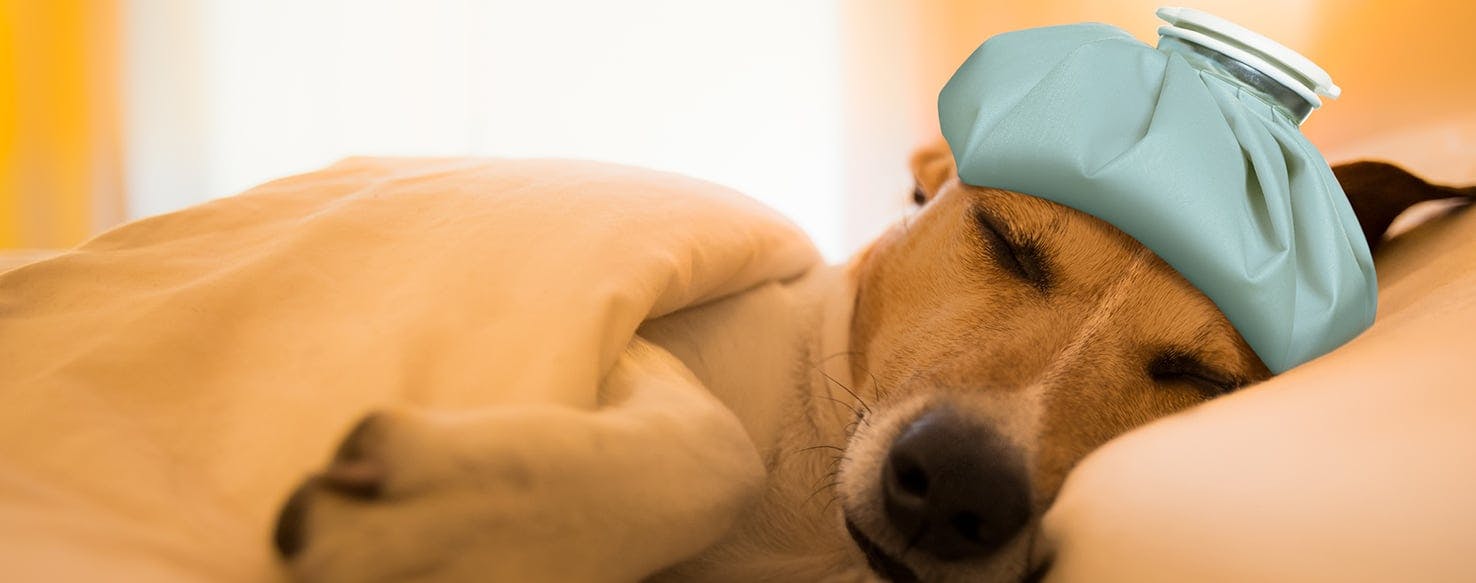
By Darlene Stott
Published: 08/04/2017, edited: 09/07/2022
Save on pet insurance for your pet
You don't have to choose between your pet and your wallet when it comes to expensive vet visits. Prepare ahead of time for unexpected vet bills by finding the pawfect pet insurance.
Overview
The canine parvovirus is a highly contagious virus that all dogs, regardless of age, are susceptible to catching. Puppies younger than four months old and unvaccinated dogs are at the greatest risk of contracting this virus.
Canine parvovirus can be found anywhere and everywhere, from contact with other dogs to the hands or shoes of people who have handled contaminated dogs. But what about cats? Are cats susceptible to parvo? Can your dog catch parvo from a cat?
Can dogs get parvo from cats?
NO!
Cats and dogs have their own separate, species-specific parvovirus strains. The cat strain, called feline panleukopenia virus (FPV), is a significant disease threat amongst the feline community, but it cannot be transferred to canines.
The same cannot be said for the reverse situation, as studies have shown that a mutated strain of the canine parvovirus can infect cats.
Learn more about canine parvovirus and its impact on dogs in Canine Parvovirus in Dogs.
Does my dog have parvo?
The canine parvovirus is easily spread through multiple means, including the following:
- Direct dog-to-dog contact
- Contact with contaminated stool (feces), people, or environments
The parvovirus can be transmitted quickly from place to place, from the hair or feet of a dog to the bowls of food and water in contaminated kennels.
Dogs who have developed parvo will exhibit certain symptoms, so if you are afraid that your dog might have contracted the parvovirus, look for any of these conditions in your pup:
- Lethargy
- Abdominal pain and bloating
- Loss of appetite
- Vomiting
- Fever
- Red gums and eyes
- Rapid heartbeat
- Low body temperature (hypothermia)
- Severe, bloody diarrhea
Frequent vomiting and diarrhea can result in rapid and abrupt dehydration. Damage to the immune and digestive systems produces septic shock. The majority of parvovirus deaths occur within 48 to 72 hours of the appearance of these symptoms.
How can I treat my dog's parvo?
There is no specific drug to eradicate the parvovirus, so treatment consists of helping your dog’s immune system become strong enough to fight off the infection.
Treatment needs to be started immediately and consists of replacing protein, electrolyte, and fluid losses, preventing secondary infections, and controlling diarrhea and vomiting. With early and proper treatment, parvo survival rates can reach 95%.
In addition to medical treatment, your dog also needs to be isolated due to the high level of contagion that parvo represents. Parvo is a difficult virus to kill, so all of your puppy’s belongings need to be thoroughly cleaned and disinfected to control the spread of the virus.
How is parvo similar in dogs and cats?
The main similarities between the parvovirus in canines and felines are its high rate of contagion and the manner in which it is spread.
The infected animal must be kept in isolation, and all of its belongings, from blankets and toys to kennels, must be disinfected. Contact via feces or through contaminated objects or kennels is the same between the species.
Another similarity is the symptoms of the infection, including extreme vomiting and diarrhea, immune and digestive system attacks, fever, and the potential for death from massive secondary infections or dehydration.
How is parvo different in dogs and cats?
Parvo in dogs and cats are different in the strain of virus, with dogs having the potential to be exposed to two separate strains, CPV-1 and CPV-2.
While in dogs, treatment of parvo consists of boosting the immune system until it can fight the infection, in cats, intravenous fluids and antibiotics are necessary even to give the cat a chance to survive.
For cats especially, the chance for survival often depends on good veterinary care and nursing.
How can parvo be prevented in dogs and cats?
For both canines and felines, prevention of parvo is a much better approach than treatment. The conventional form of parvo prevention is vaccination. Although vaccination is no guarantee that your dog or cat will not become infected with parvo, it severely limits the odds of it happening.
Many holistic veterinarians and advocates believe in more natural methods to prevent parvo, and for those who are anti-vaccination, there are proactive steps to take to avoid canine parvovirus. Talk to your veterinarian about the best approach for protecting your dog from this virus.
Case Study
A dog abruptly throws up his dinner one night. The symptoms advance the next day to frequent vomiting and diarrhea. The dog is brought to the veterinarian who issues a parvo test (blood and fecal tests). When the dog tests positive, the vet immediately has the dog isolated and treated with intravenous fluids and antibiotics. The dog is given intravenous nutrition and electrolytes, as well as an antiemetic injection to reduce nausea and vomiting.
Because the dog was brought to the veterinarian quickly, and due to the immediate care given, the canine responds to treatment and eventually overcomes the infection.
As cats can catch certain strains of canine parvovirus, any cats in this dog’s household should be isolated and brought to the veterinarian for parvo testing.
If your dog is at risk of developing parvo, check out our pet insurance comparison tool. Brought to you by Pet Insurer, Wag! Wellness lets pet parents compare insurance plans from leading companies like FIGO and Nationwide.
You may also like
